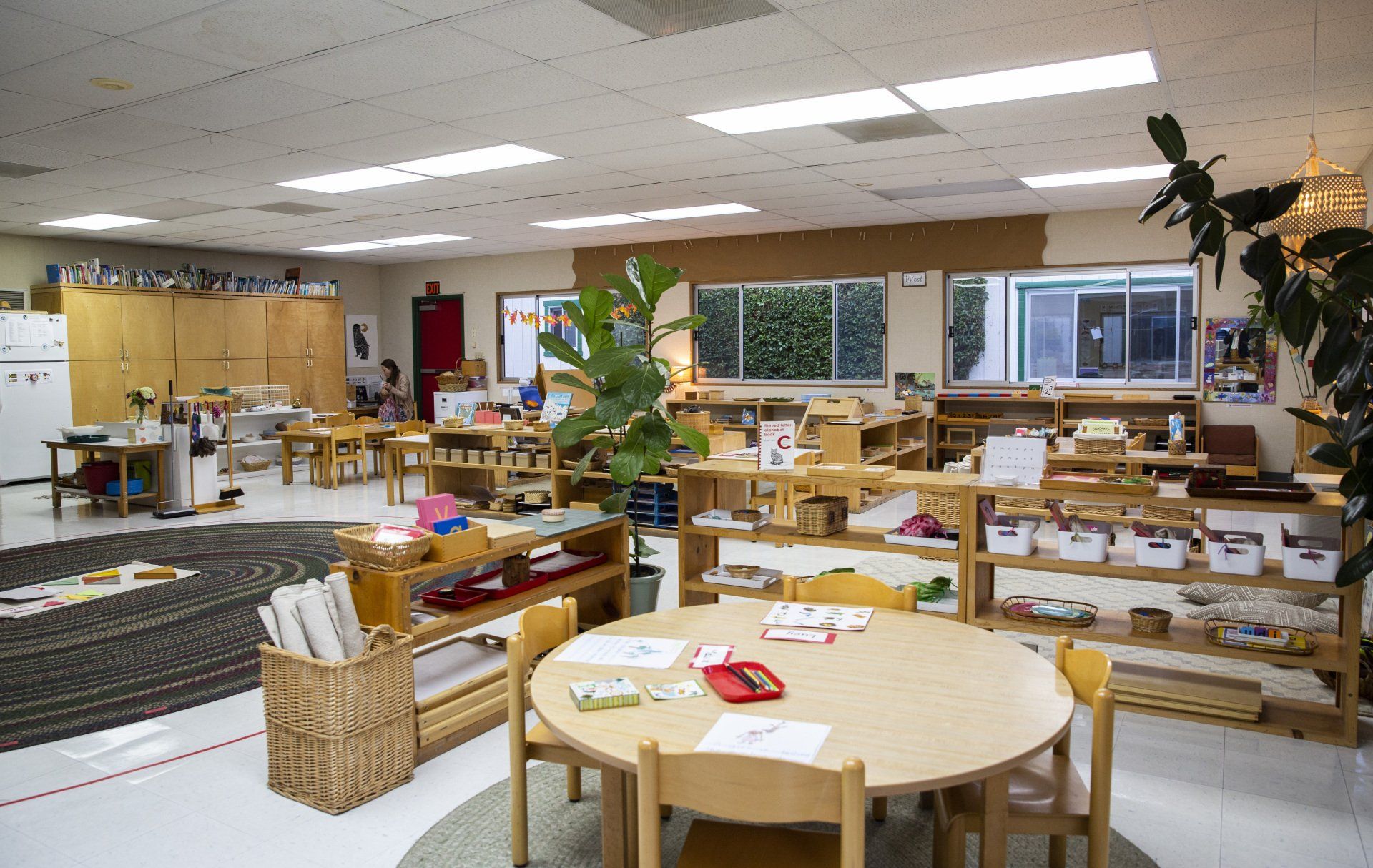Transitioning from Summer to School

Although it can be hard to think about the end of summer days and the return to routine, there is value to getting back into a consistent schedule. Steady, well-thought-out routines help our children develop good habits that can last a lifetime. In addition, the consistency of routines can decrease stress, ease anxiety, and reduce irritability (for both children and parents!).
Ideally, the transition from summer to the school year can happen gradually so your child can gently adjust to the skills and schedules that will allow for a smooth start on the first day. Here are a few things to consider as you begin this shift.
Casual Conversation & Calendars
We’ve found that it helps to begin by casually talking about the start of school. While out shopping, you can notice aloud how stores have back-to-school items and comment about how it’s almost time for the school year to begin. Because young children live in the present, it is important to keep the time frame general.
If you do talk about school with your child, it’s best to try not to build up false expectations about what they will do in school. Modeling curiosity and openness can go a long way. If you drive by a school, for example, you can wonder aloud: “I wonder what children in this school do after they walk in the door.” Or “I’m so curious about what kinds of activities children enjoy doing during their school day.”
Older children who have a solid concept of linear time can benefit from having a family calendar that is visible to everyone. They might want to mark off a countdown to the first day, or help set some benchmarks for getting back into a normal sleep schedule.
Sleep Routines
One of the hardest parts of coming out of vacation mode can be shifting back into a school sleep schedule. Rather than just expecting that everyone will adjust on the first day, it’s best to gradually transition into the school-year bedtime and wake-up routine.
First determine what time your child will need to wake up in order to have a peaceful, unhurried morning. You can then start waking your child up a little earlier each morning. In addition, you’ll want to have bedtime begin a little earlier each night. Making these changes in 15-minute increments works best. The goal is for your child to begin getting up rested and refreshed at the wake-up time you’ve determined.
We recommend establishing an age-appropriate bedtime and sleep routine. Having a calm mind at bedtime and developing good sleep habits, has long-term benefits for your child. For more information visit the Sleep Foundation.
Morning Routines
Having enough time for a calm, consistent morning routine decreases stress and anxiety for everyone. Plus, children really appreciate having some ownership over the process.
To prepare, you can make sure your child has clothing and shoes that are easy to put on and take off. For younger children, you can have two outfit options available so they can choose what they want to wear. Older children can select their clothes the night before and lay them out for the next morning.
It can also help to collaborate with your child to create a visual schedule of what needs to happen each morning: getting up and out of bed, getting dressed, eating breakfast, brushing teeth, preparing lunch and snacks, etc. You can add images to the schedule and even turn it into a checklist. If you laminate the schedule or checklist, children may appreciate using a dry erase marker to check off each item they have completed.
Preparing Snacks & Lunch
Having snacks and lunch prepared ahead of time can ease a great deal of morning stress. Even the youngest children can help get their snack and lunch food ready. Sometimes having everything ready the night before is easiest, so all children need to do is put containers in their lunch bags to be ready to head out the door. That being said, with enough advance preparation and plenty of time built into the morning schedule, preparing lunch and snacks can easily happen in the morning.
To support children in making their own lunches, we just need to make sure to have some healthy options prepared and accessible. This can mean having a low section of the cupboard or refrigerator designated for child-friendly snacks and lunch options. You can do some minimal food prep–like hard-boiling and peeling eggs, slicing up chicken breast, or chopping vegetables–and then have the items ready in small, easy-to-open containers.
If you pack your own lunch alongside your child, you can also model choosing healthy foods and serving sizes.
Stay Organized
Your child (and you) benefit from a sense of order and predictability. Thus, we recommend dedicating and preparing a space in your home for all school necessities, such as backpacks, lunch bags, shoes, etc. Ideally, this space for school items is attractive and child-sized. Having low hooks or a small shelf near the door can allow your child to develop a strong sense of capability and independence.
Even before school begins, you can practice coming home and putting everything where it belongs. Your child can be in charge of hanging their backpack on a low hook and even putting their lunch containers in the sink or dishwasher.
If the space gets a little disheveled, you can take a few minutes together with your child to tidy up the items and appreciate how much better things feel when everything is in its place.
The transition from summer to school year can be an opportunity to establish teamwork and collaboration with your child. So that your child can be an active participant in the process and so that you don’t end up taking on all the stress, remember to ease into the new routines, allow time and space to prepare consistent systems, and provide just enough support for your child to experience some independence and success in the process. The result? Healthy habits and a more peaceful practice for everyone.
Want a quick reference for the transition from school to summer? Download this one-page printable!
Programs
Montessori Center School admits students of any race, color, religion, national and ethnic origin, gender identity, and sexual orientation to all rights, privileges, programs and activities general recorded or made available to students at the School. It does not discriminate on the basis of race, color, religion, national and ethnic origin, gender identity or sexual orientation in the administration of its educational programs, admission and tuition assistance policies, and athletic or other school-administered programs. Non-Profit Education Organization, License No. 426205239


